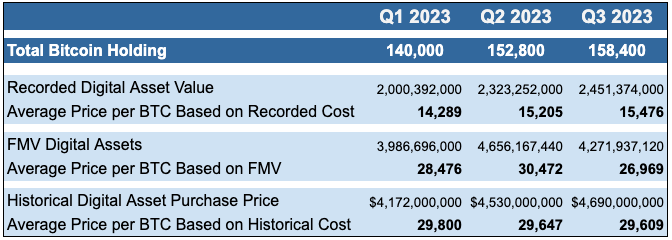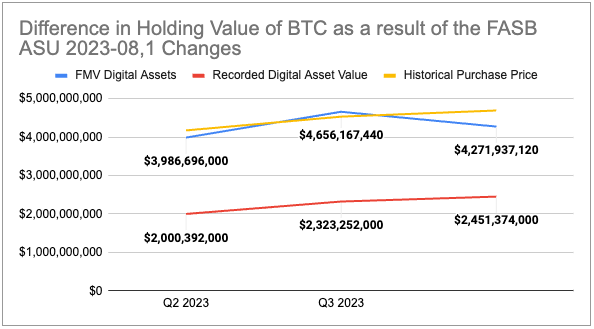Foreign Reporting Requirements for Cryptocurrency (Form T1135)
The CRA requires that individuals, corporations and certain partnerships and trusts that hold “specified foreign property” (SFP) with an aggregate cost basis of over $100,000 CAD at any time during the tax year report using form T1135 – Foreign Income Verification Statement.
Late filing of the form attracts a hefty penalty of $25 per day up to a maximum of $2,500. There CRA can also choose to assess ‘gross negligence’ penalties of $500 per month up to a maximum of $12,000 for failure to file the form.
If you hold cryptocurrency that has a cost basis of $100,000 or more, you will have to file this form with your personal tax return (T1) or corporate tax return (T2), depending on whether you own it personally or through a corporation, unless certain exceptions are met. Trusts and partnerships must also file this form, if applicable.
Is cryptocurrency considered “specified foreign property”(SFP)?
A common question from taxpayers and advisors has been – when is cryptocurrency considered to meet the definition of “specified foreign property”?
The CRA has been slow to comment on cryptocurrency taxation issues, but has provided updated guidelines for tax considerations, and has recently commented on form T1135 in response to clarifying questions posed by CPA Canada, which will be discussed further here.
Most often, taxpayers would be familiar with this form when SFP is held such as shares of foreign companies (i.e shares of publicly traded US corporations).
Included in SFP is “intangible property situated, deposited, or held outside Canada”. The CRA has commented:
“As stated in Technical Interpretation 2014-0561061E5, it is the CRA’s view that cryptocurrency (referred to at the time as “digital currency”) is funds or intangible property. As such, cryptocurrency may need to be reported on Form T1135 depending on where it is “situated, deposited or held”.”
So yes, cryptocurrency may be considered to be SFP by the CRA, and may need to be reported on form T1135.
Where is cryptocurrency situated, deposited, or held?
This has been the tricky part. Where does cryptocurrency exist? If you hold cryptocurrency in cold storage, is it situated where your hardware wallet is stored? If it is held by an intermediary such as an exchange, does the location of the exchange dictate this? What if the exchange is Canadian, but they store cryptocurrency in cold storage in another country? If that is the case, how would we know?
The fact that cryptocurrency is for lack of a better word “stored” on a blockchain argues that it can exist simultaneously in many geographical locations. So, can it arguably be ‘situated’ anywhere?
With all of this uncertainty and without going down rabbit holes of exchanges, intermediaries, nodes, and hot vs. cold storage, we have generally taken the stance as advisors that cryptocurrency is always considered to be situated, deposited, or held outside of Canada, and recommend including the cost basis of all crypto assets in determining foreign reporting requirements.
Like many complex questions regarding cryptocurrency, looking at traditional finance examples is often helpful where no guidance or legislation provides answers, which is what the CRA has done here, referring to where the shares of a corporation are ‘held’:
“…shares of a Canadian resident corporation held by a non-resident agent for the benefit of a Canadian reporting entity are considered to be intangible property situated, deposited or held outside Canada.”
So, the CRA is extrapolating that intangible property, even if it is shares of a Canadian company, if managed/held by a third party (such as an exchange), and if that third party is situated outside of Canada, the property would be SFP for the purposes of the T1135.
What about when the third party that is custodian of your crypto is a Canadian crypto exchange? The CRA commented:
“Where cryptocurrency is held through an intermediary, characterizing the relationship between that intermediary and the taxpayer may be relevant in determining whether the cryptocurrency is situated, deposited or held outside Canada. In Canada, intermediaries that wish to offer crypto assets services to Canadian clients must comply with guidelines issued by the Canadian Securities Administrators (“CSA”) – referred to by the CSA as “crypto trading platforms” or “CTPs”. While the determination of where cryptocurrency is “situated, deposited or held” is a question of fact that can only be determined after a review of all the documents and the circumstances applicable to a particular situation, it is our view that, where CTPs are resident in Canada and comply with Canadian regulations, cryptocurrency held through such CTPs for the benefit of Canadian clients will typically not be considered as “situated, deposited or held” outside Canada.”
We find this a bit too ambiguous to comfortably determine what portions of a taxpayer’s cryptocurrency holdings would fit into these parameters. It could be argued based on this CRA comment that if all of your crypto holdings are in a compliant, Canadian CTP, and you hold no other SFP, then you would not need to file form T1135.
Barring unique situations, we still recommend that all cryptocurrency holdings be included in the consideration for the total cost basis of SFP.
Capital vs. Inventory
There is a common ‘carve-out’ rule that excludes cryptocurrency and other property from being considered SFP. If the property is used or held exclusively in an ‘active business’, then it is not included in specified foreign property.
The distinction of capital property vs. inventory is important for those trading cryptocurrency, either as an individual or a corporation. There are several determining factors to consider whether trading activity is capital in nature, or constitutes an active business (again, this is out of scope for this discussion).
In short – assuming that ‘day-traders’ of cryptocurrency are carrying on an active business (this is complicated and requires analysis to determine), the cryptocurrency held is considered inventory of the active business, and is not required to be reported for the purposes of form T1135. Note: there may be situations where some property held is inventory in active business and some is capital property.
This would likely not apply to holders that have purchased cryptocurrency over time, with the intention of holding for appreciation in value over the long-term and/or receiving staking rewards. This situation better reflects that of a traditional stock investor, and would likely be considered capital property for taxation purposes and included as SFP for form T1135.
The CRA also commented on whether crypto held in an “adventure in the nature of trade” would be considered inventory held in an active business. This would be applicable in a case where someone who has never dabbled in cryptocurrency decides there is an opportunity for a quick flip for profit and, say, purchases a bunch of BTC, and sells the next day for a substantial profit.
This is likely not a capital transaction, but also per the CRA comments, does not constitute carrying on an active business. This would be an adventure in the nature of trade. Therefore, if at one point in the year, the person in this example held BTC with a cost basis of $150,000, and sold it the next day, they would be required to file form T1135 in that year:
“…although an adventure or concern in the nature of trade is included in the definition of the term “business” in section 248, it does not necessarily mean that a taxpayer who is engaged in an adventure or concern in the nature of trade is “carrying on” a business or has “carried on” a business. Where it is established that property such as cryptocurrency or NFTs are held or used in an adventure in the nature of trade, CRA will consider that such property is not held or used “in the course of carrying on an active business” for purposes of applying paragraph (j) of the definition of “specified foreign property” in subsection 233.3(1) of the Act. As such the exclusion provided in that paragraph would not be applicable with respect to the property.”
T1135 Filing Due Date
The due date for filing form T1135 is the same date as income tax returns for individuals, corporations and trusts and the same date as the partnership information return for partnerships. See HERE for dates.
If you need help navigating cryptocurrency taxation and reporting, you can CLICK HERE to book a consultation with our team.
Disclaimer: Any tax information published on this blog is based on the facts provided to us and on current tax law (including judicial and administrative interpretation) during the time of publication. This does not constitute legal advice. Tax law can change (at times on a retroactive basis) and these changes may result in additional taxes, interest, or penalties. Practice due diligence and if in doubt, speak with a member of our team.







